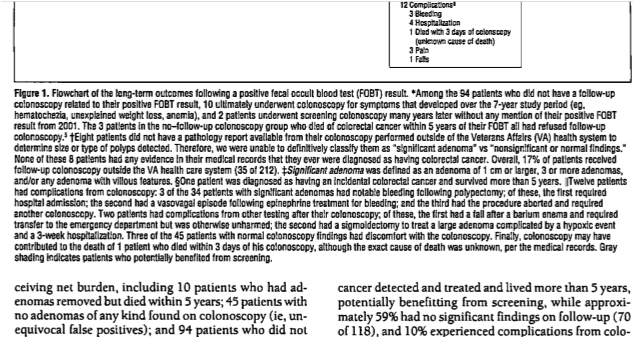【文献名】
Gavin Falk, clinical research fellow, Tom Fahey, professor of general practice.
Diagnosis in General Practice: Clinical prediction rules BMJ 2009;339:(Published 7 August 2009)
【要約】
<Clinical Prediction Ruleとは何か?>
Clinical Prediction Ruleは、症状・徴候・診断的検査を組み合わせて点数化し、その結果から、対象となる疾患を持つ可能性に応じて、患者を層別化する。その際に注目されるアウトカムは多種多様で、診断・予後・治療全般に用いられる。
Clinical Prediction Ruleは一般的に臨床応用されるまでに3つの段階を踏む。
①ルールの開発;探索的因子(症状・徴候・診断的検査)の単独もしくは組み合わせでの影響を確認する段階。
②より狭いまたは広い範囲での妥当性確認;異なる集団での妥当性を調査する段階
③Impact analysis;RCTを用いてClinical Prediction Ruleが患者アウトカム・臨床家の行動・資源利用などに与える影響を調べる段階。例としては、CAGE questionnaireが挙げられる。
<どんな時に用いられるか?> 最もよく用いられるのは、疾患の存在する可能性をより洗練して見積もる段階においてである(下記Fig1参照)。適応するためには、ベイズの定理(事前確率を見積もり、尤度比から事後確率を導き出す)の考え方が必要である。例えばプライマリケアセッティングでは、疾患の除外を行ったり、注意深い経過観察が適切と考えるための根拠がほしい場面が多い。そのような状況では、感度が高く、NPV(陰性適中率)が低いRuleが適切である。 (Bayesの定理においてClinical Prediction Ruleを組み合わせた具体的な利用例がノモグラム併記で原文にあります。ご参照ください。)
<どんな時に誤りが起こるか?>
一般的な診断的検査と同様に、その妥当性や臨床上での適応性に影響を与えるバイアスに弱い。
ヒューリスティック※1は状況が単純であればうまくいくのだが、状況が複雑になってくると誤まった判断の原因となる。
しばしばルールの適応時に起こり得るエラーは、
①疾患の事前確率を見誤る場合
例;利用可能性バイアス 非常に強烈だったり、印象に残りやすい出来事、例えばまれだが記憶に残る疾患 の可能性を高く見積もってしまう)
②ルールの開発時の手法的問題によって誤りが起こる場合
例;ルールの正確性が確認された母集団と、ルールが適応された患者が臨床的に異なったスペクトラムを持っていた場合。(※発表者捕捉この場合はスペクトラムバイアスといって、診断的検査が持つ感度と特異度は変化してしまうため、ルール自体の性能が変わってしまう。) 通常はルールが開発された際の母集団の方が重症で進行した疾患であることが多いため、感度・特異度ともに実際よりも大きく見積もられがちになる。
③ルールにおける量的な見積もりが不正確な場合、そのルールからくる診断的・予後的・治療的な推奨はさらに不確かなものになってしまう。
プライマリケアセッティングにおけるPrediction Ruleの応用の難しさは、CRB-65スコア(肺炎の予後推定スコア)においてもわかる。プライマリケアセッティングで応用されたときに、スコアは低リスク群の患者を的確に導き出したが、では、どこで紹介を考慮すべきなのか、そしてそれがどの程度その後のマネージや生存率を変えるのかについてははっきりしなかったのである。
<どのようにして(弱点を)改善することができるのか?>
・Clinical Prediction Ruleの導入・報告のための、標準的な方法論が報告されている。STARD※2と呼ばれるフレームワークがおそらくはルールの開発・報告の質を上げるだろうし、特にスペクトラムバイアスや選択バイアスへの対策となるだろう。
・近日は、サンプルサイズを多くして、ルールの正確性を改善させようとする試みもなされている。例えば、 UKのプライマリケアでは咽頭痛に関する合併症を予測する臨床的な特徴を割り出すために18000人の咽頭痛患者を蓄積しての研究がおこなわれている。www.descarte.co.uk
・最後に、ルールを正確に想起し、適応するためのコンピューターによるシステム(clinical decision support systems)が開発されつつある。
【参考】
※1ヒューリスティック;人が複雑な物事を分析したり、解決したりするときに、暗黙で用いている簡便な解法や法則を指す。分類として、「代表性」、「利用可能性」、「固着性」といったものがある。
「代表性ヒューリスティック」;特定のカテゴリーに該当しやすいと思われる事柄の確率を過大に評価する。 消化性潰瘍=腹痛と、代表させてしまうと、腹痛がない患者において潰瘍の可能性を不適切に棄却してしまう。(実際には腹痛がない消化性潰瘍はかなりの割合で存在する)
一般的に診断が「難しい」とされる疾患群は「我々の代表的と思っている特徴」と「実際の特徴」のずれが大きいことが多いようです。(例;感染性心内膜炎、大動脈解離、肺血栓塞栓症)
「利用可能性ヒューリスティック」;上述。
「固着性ヒューリスティック」:アンカリング、ともいう。初めに「これだ!」と思ったものからなかなか離れられない。例;胸痛+ST上昇⇒MIと思ってしまうと、なかなか大動脈解離は思い浮かばない。
※2 STARD;http://www.bmj.com/content/326/7379/41.1.full.pdf ←を参照ください。
Fig 1 Stages and strategies in arriving at a diagnosis
【開催日】
2011年9月28日


